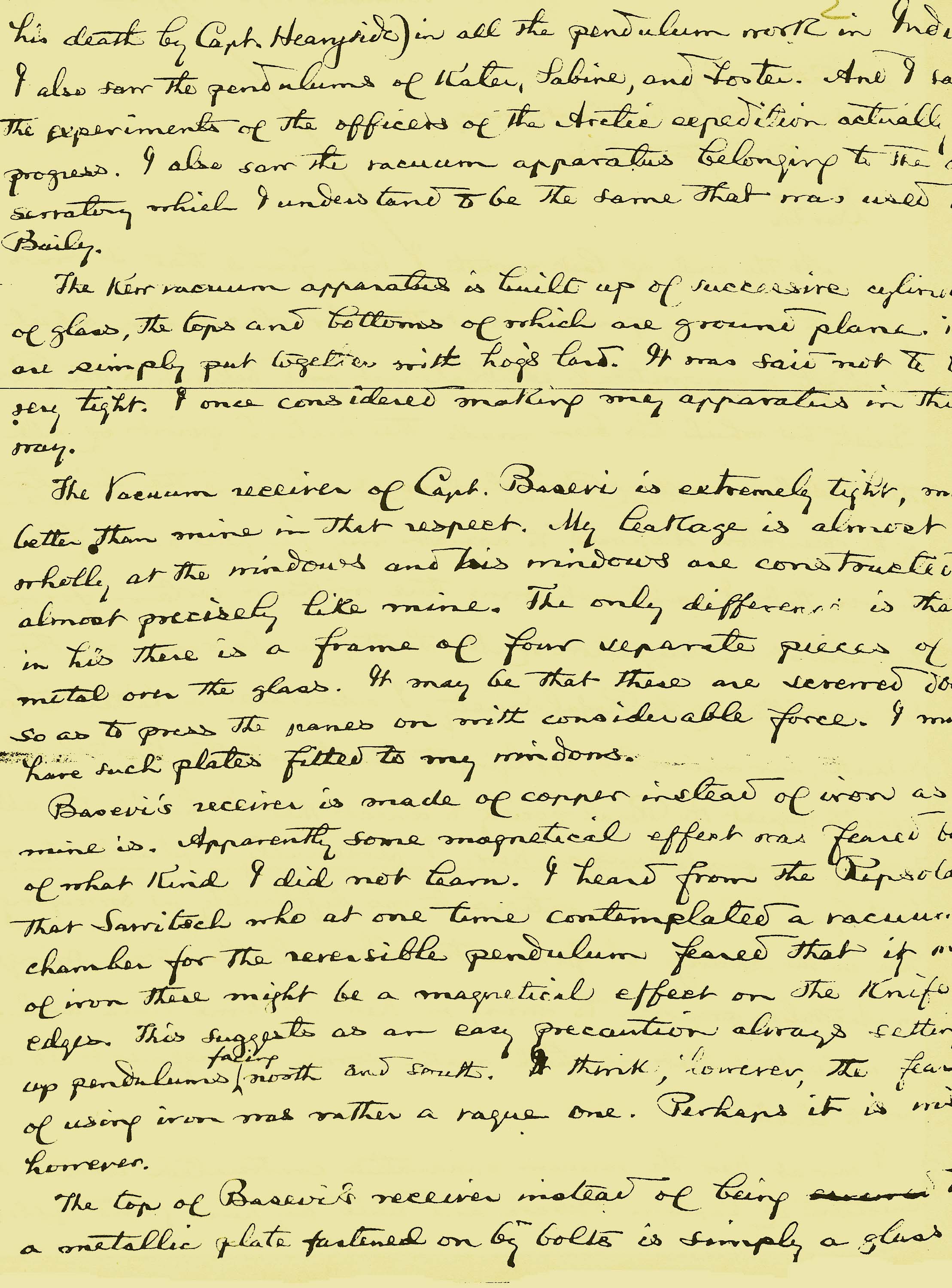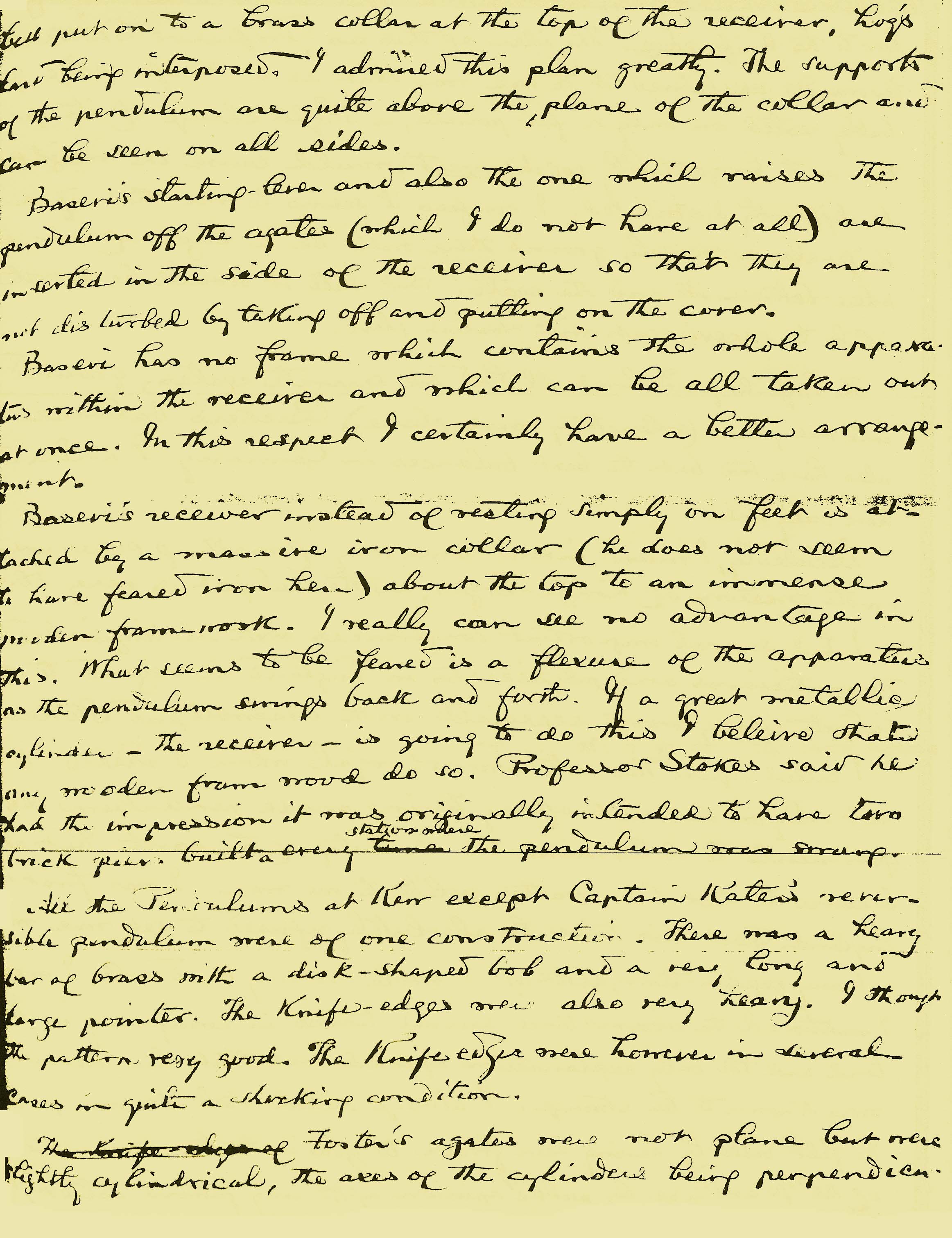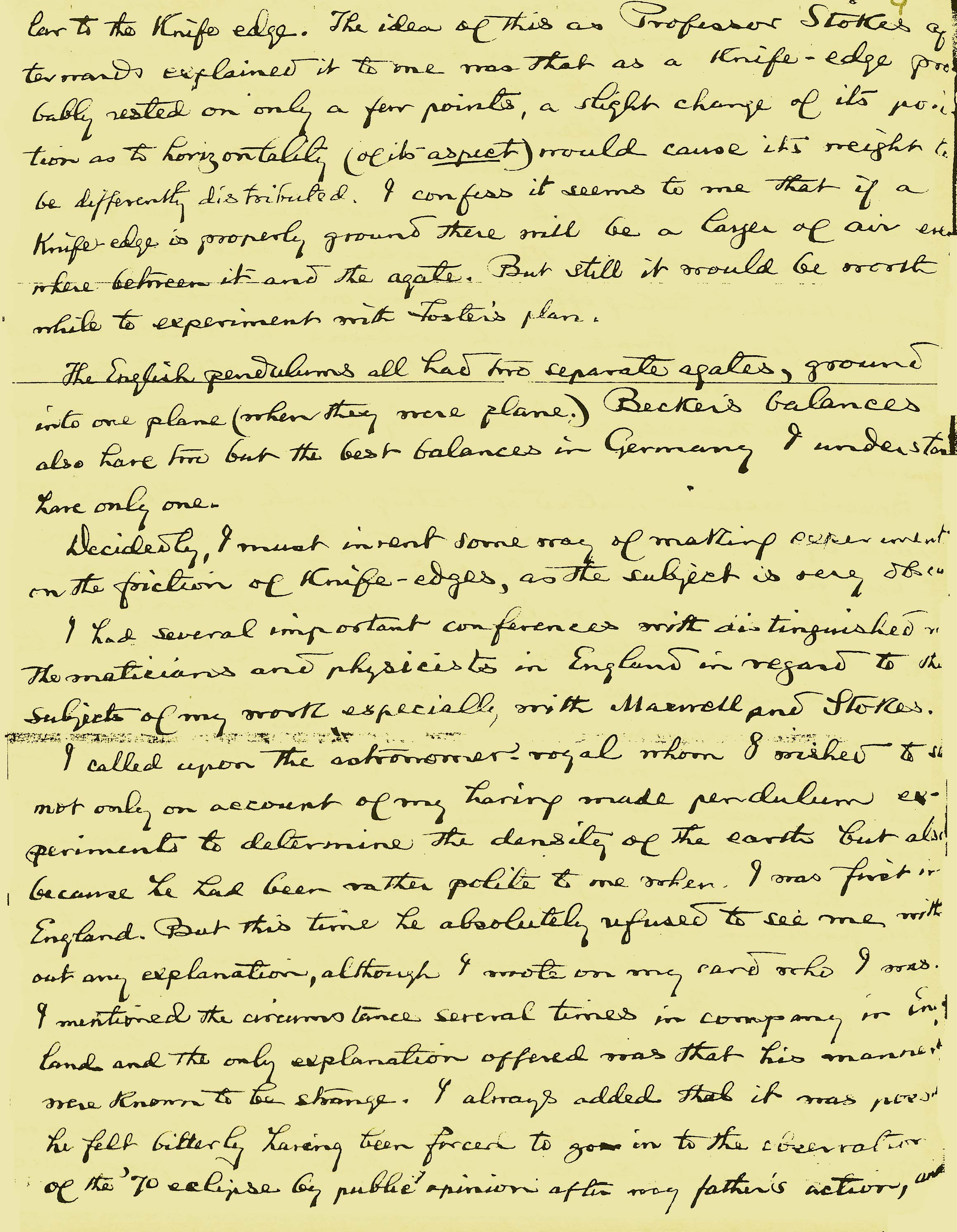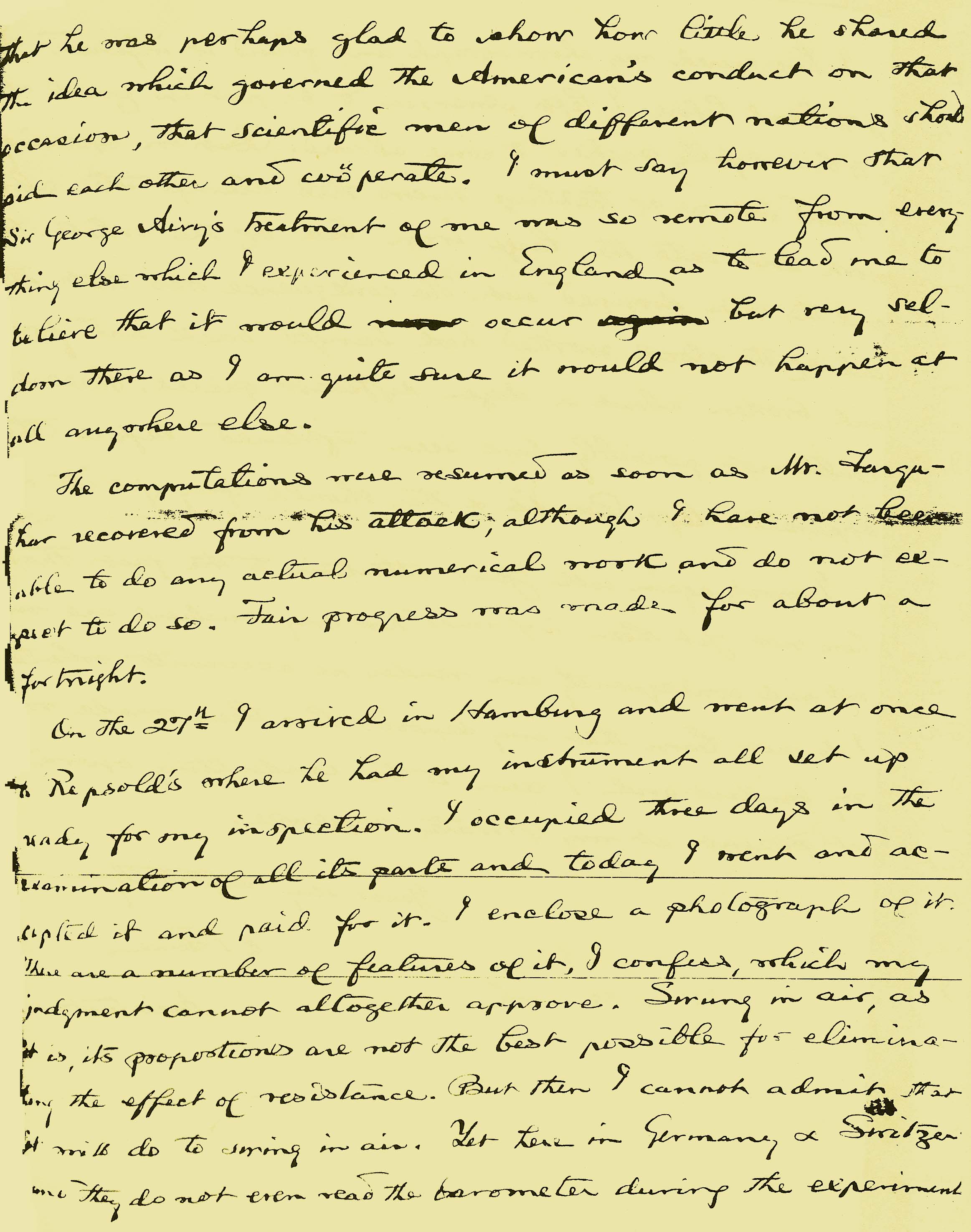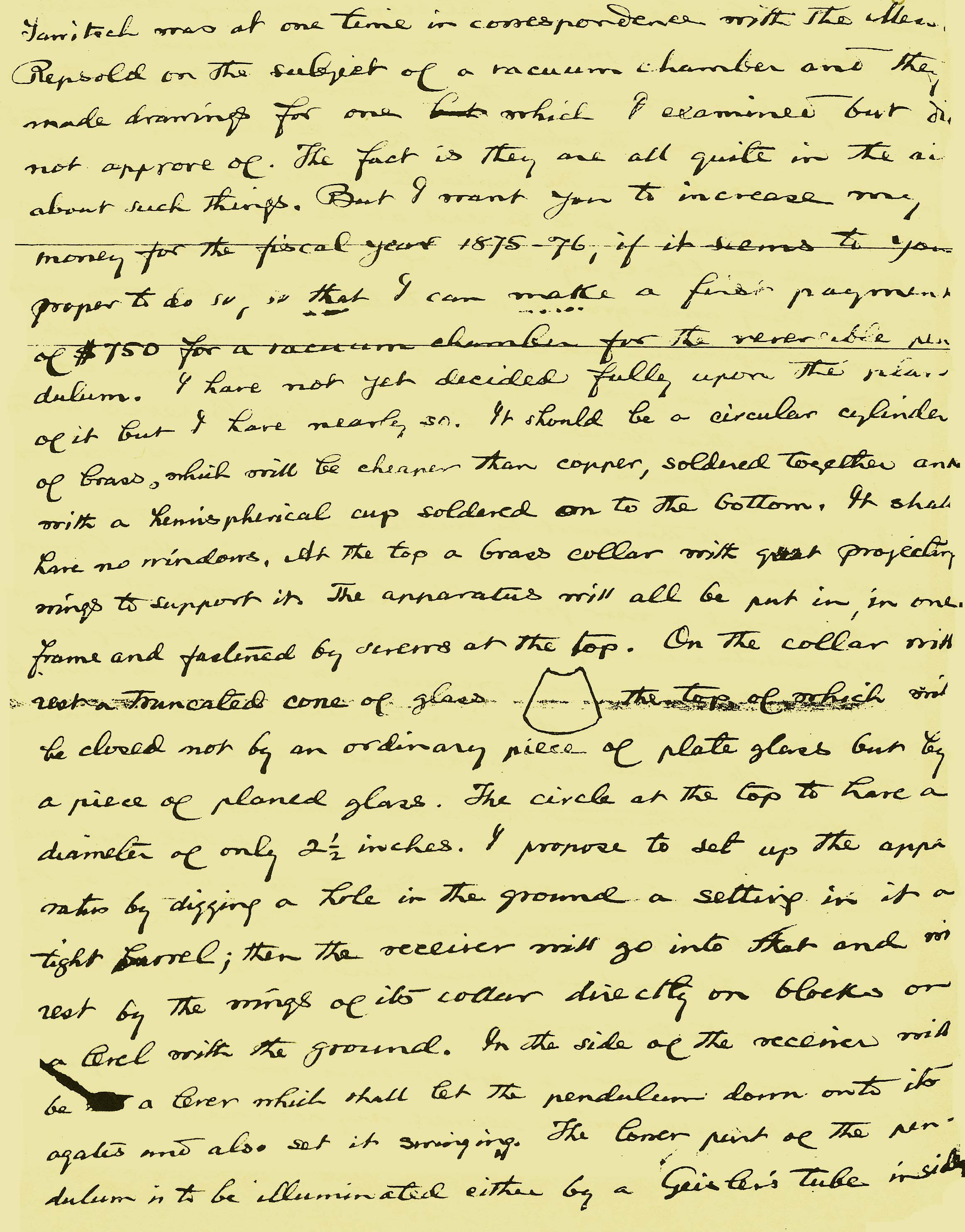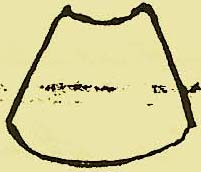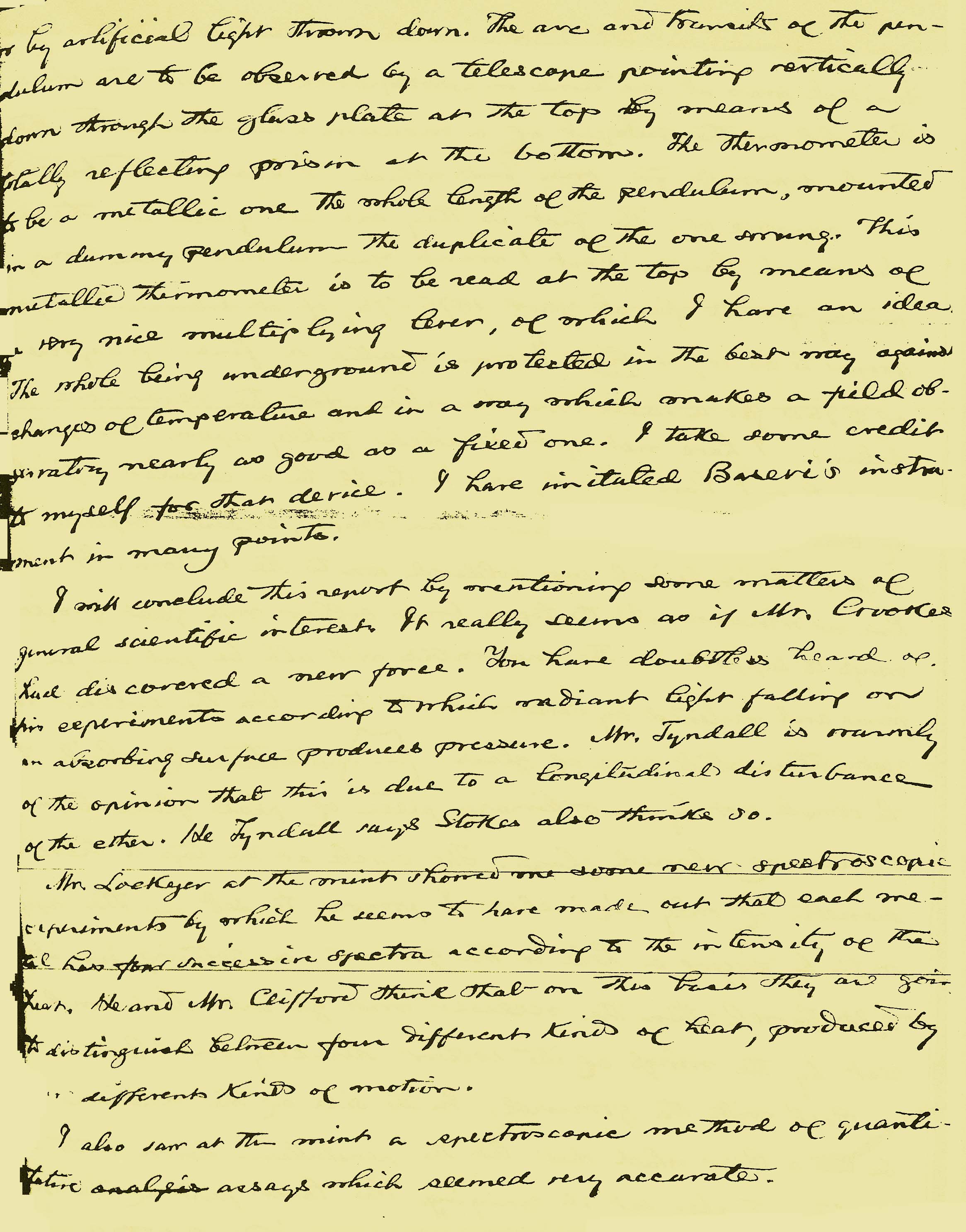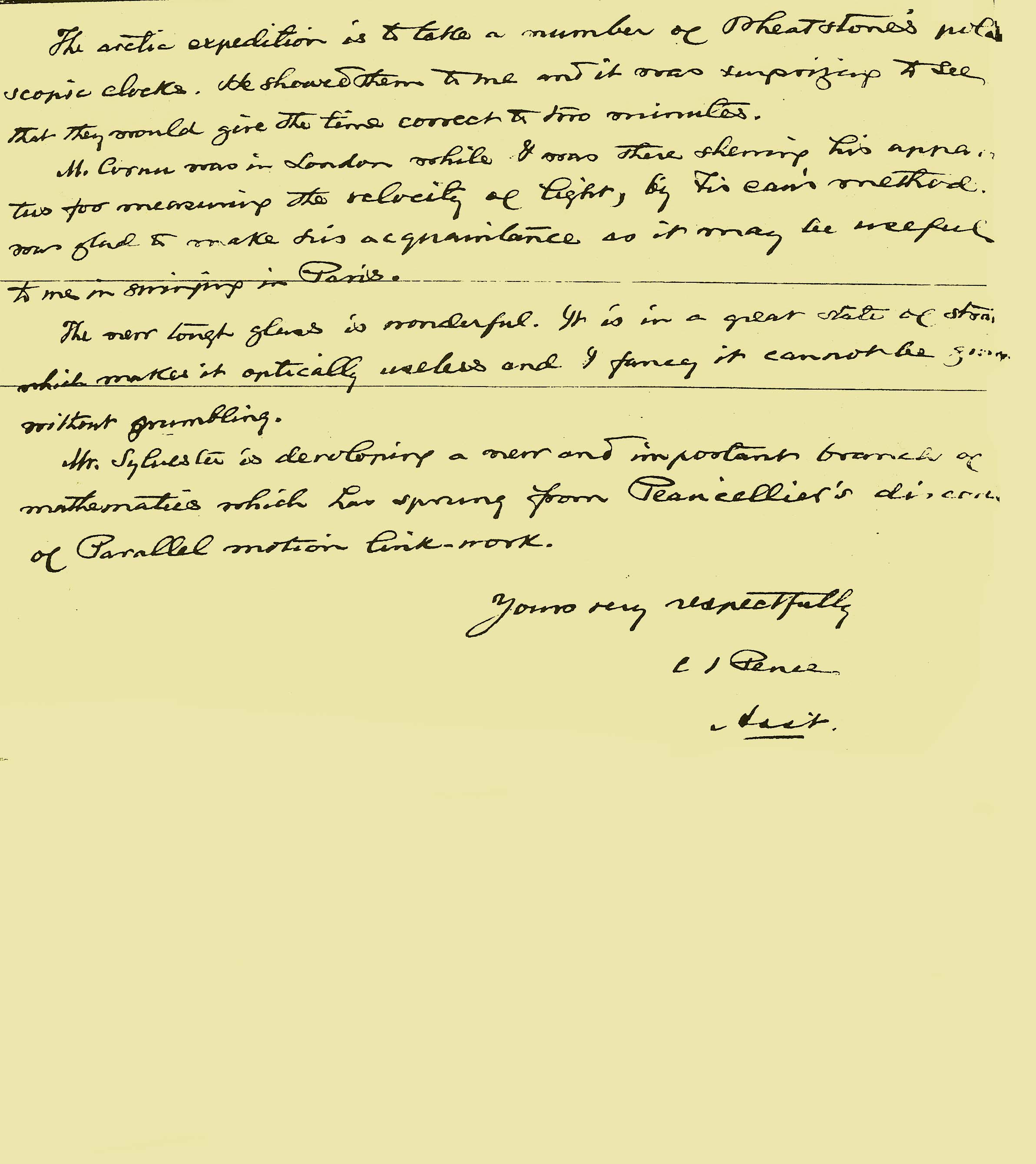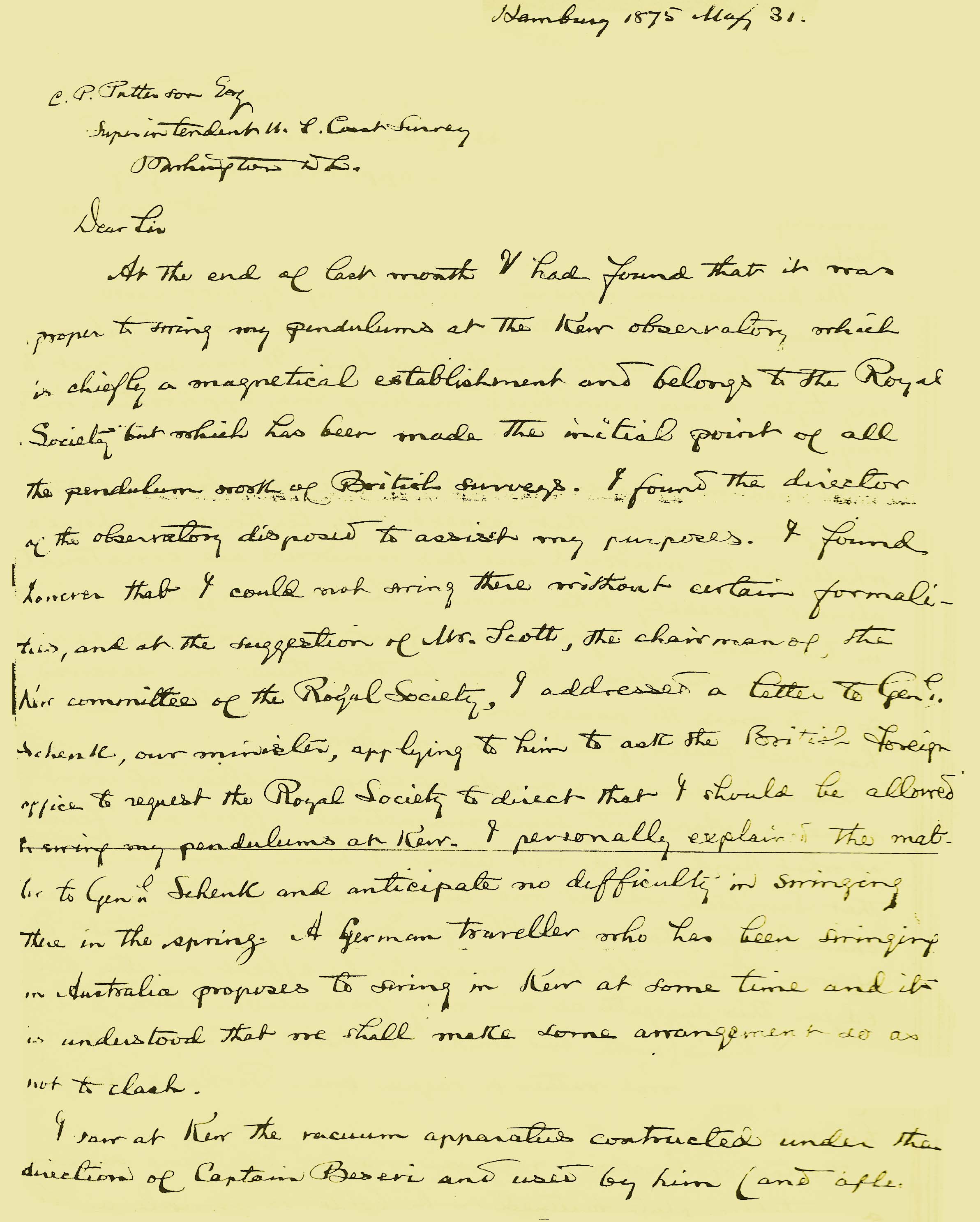
|
Superintendent U. S. Coast Survey Washington D. C. Dear Sir, At the end of last month I had found that it was proper to swing my pendulums at the Kew observatory, which is chiefly a magnetical establishment and belongs to the Royal Society but which has been made the initial point of all the pendulum work of British surveys. I found the director of the observatory disposed to assist my purposes. I found however that I could not swing there without certain formalities, and at the suggestion of Mr. Scott, the chairman of the Kew Committee of the Royal Society, I addressed a letter to Gen. Schenk, our minister, applying to him to ask the British Foreign office to request the Royal Society to direct that I should be allowed to swing my pendulums at Kew. I personally explained the matter to Gen.l Schenk and anticipate no difficulty in swinging there in the spring. A German traveller who has been swinging in Australia proposes to swing in Kew at some time and it is understood that we shall make some arrangement so as not to clash. I saw at Kew the vacuum apparatus constructed under the direction of Captain Basevi and used by him (and after
|
